Avoiding SEIS/EIS Mistakes: Founder’s Guide 2025

Written by:
Daniel Scott
Partner & Head of Accounting
Avoiding Costly Mistakes with SEIS/EIS, What We’ve Learned from HMRC
SEIS and EIS are two of the most generous tax relief schemes in the world. They’re also tightly policed by HMRC. For founders, the schemes can be the difference between securing investment and struggling to get a round off the ground. But I’ve seen plenty of cases where companies lose eligibility, not because they were bad businesses, but because they tripped over the fine print.
In this post, I’ll walk through the common mistakes that derail SEIS and EIS applications, and what you can do to avoid them. These aren’t abstract rules, they’re based on real patterns I’ve seen in HMRC responses.
The Wrong Kind of Shares
This one crops up all the time. To qualify, SEIS and EIS shares must be full-risk ordinary shares. They can’t carry preferential rights to dividends, they can’t be redeemable, and they can’t include guarantees of return.
Yet I still see subscription agreements or articles that sneak in clauses giving investors priority over dividends or repayment. To an investor, it feels like good protection. To HMRC, it’s an automatic red flag. If the shares aren’t full-risk, the whole raise could be disqualified.
Filing Too Late
Timing is critical. HMRC gives you two years from the end of the tax year in which the shares were issued to submit your compliance statement. Miss that window, and investors lose their relief permanently.
I’ve seen founders leave compliance until months after the round closes, thinking they’ll deal with it later. Then something slips through the cracks, and before they know it, they’ve blown the deadline. Investors don’t forget that kind of mistake.
Missing Investor Details
Another common pitfall is failing to provide HMRC with full investor details. Each investor’s name, the number of shares, and the amount subscribed all need to be included. Vague or incomplete submissions lead to HMRC queries, which drag out the process.
This one usually happens when founders don’t keep good records at the point of subscription. If the details aren’t tracked at the time, trying to reconstruct them later becomes painful, and investors can’t claim their relief until everything matches up.
Overlooking State Aid Rules
We covered this in detail in the last blog, but it’s worth repeating here. SEIS counts as de minimis State Aid, subject to the €200,000 cap over three years. If you’ve also received de minimis grants, you may not be able to raise the full £250,000 under SEIS.
The mistake isn’t taking grants, it’s failing to check the aid basis. Some Innovate UK awards are de minimis, others are notified aid, and others fall under the UK’s new MFA rules. HMRC will expect you to disclose them all, and if you don’t, your SEIS application may be rejected or cut back.
Structuring the Round Incorrectly
Founders sometimes try to mix SEIS and EIS shares in the same issue, rather than sequencing them. But HMRC insists SEIS shares must be issued first. If you don’t separate them properly, ideally on consecutive days, you risk invalidating one or both parts of the round.
I’ve also seen founders issue shares in multiple small tranches across different dates, each of which then requires its own compliance statement. That multiplies the paperwork and compliance costs for no real benefit.
Advance Assurance vs Compliance: The Disclosure Trap
Another mistake is thinking that advance assurance (AA) is a guaranteed green light. It isn’t. HMRC bases AA on the information you provide, and sometimes founders hold back detail, either because they don’t know it matters, or because they’re worried it could jeopardise approval.
The problem comes later. When you file the compliance statement, HMRC sees the full picture: share agreements, Articles, cap tables, investor lists, and grant history. If anything looks different to what you presented at AA, or if crucial information was missing the first time, HMRC can block the compliance.
I’ve seen this happen where founders disclosed just enough to get AA, but didn’t mention side agreements or previous grants. The AA was approved, but the compliance was rejected. Investors had already subscribed by then, leaving the company in a difficult spot.
The lesson is clear: be transparent upfront. AA is only useful if it survives scrutiny at compliance stage. HMRC would rather see everything early than have to unpick discrepancies later.
FAQs
Q: What happens if HMRC rejects my compliance statement?
You can usually correct and resubmit, but it delays investor certificates. The bigger risk is if the rejection reveals a fundamental error, like issuing non-qualifying shares, in which case the relief is lost.
Q: Can I fix mistakes in my articles after the raise?
Generally, no. HMRC assesses the terms at the time of issue. Changing them later doesn’t make the original issue qualifying.
Q: What if I’ve already missed the filing deadline?
There’s no extension. If the two-year window is gone, the relief is gone. This is why compliance needs to be handled immediately after a round.
Q: Can HMRC claw back relief after approval?
Yes. If conditions aren’t met for three years after the share issue (for example, if the company starts an excluded trade), investors can lose their relief.
Practical Advice
The best way to avoid these mistakes is to treat SEIS/EIS compliance as part of the fundraising process, not an afterthought. Get your articles and subscription agreements reviewed before you issue shares. Keep meticulous records of who invested, how much, and when. Check the aid basis of every grant you’ve received. And don’t delay filing compliance, make it a priority the moment the round closes.
HMRC isn’t out to trip you up, but they are strict. They expect consistency, transparency, and timeliness. If you can show that, your application will usually go through smoothly.
Why This Matters
Investors back startups under SEIS and EIS because the relief makes high-risk bets more attractive. If you lose that relief because of avoidable mistakes, you don’t just harm this round, you damage your reputation for future ones.
Getting SEIS/EIS right isn’t about box-ticking. It’s about protecting investor trust and proving you’re a founder who understands the detail as well as the vision.
How We Can Help
At OnTheGo Accountants, we’ve seen every mistake in the book — and we know how to stop them before they derail your raise. From checking share structures to mapping State Aid, we help founders file clean, accurate, and timely submissions that keep investors happy.
If you want peace of mind that your SEIS/EIS round will stand up to HMRC scrutiny, get in touch at info@onthegoaccountants.co.uk.
Next in the series: SEIS/EIS Cheat Sheet — A Downloadable Checklist for Founders





